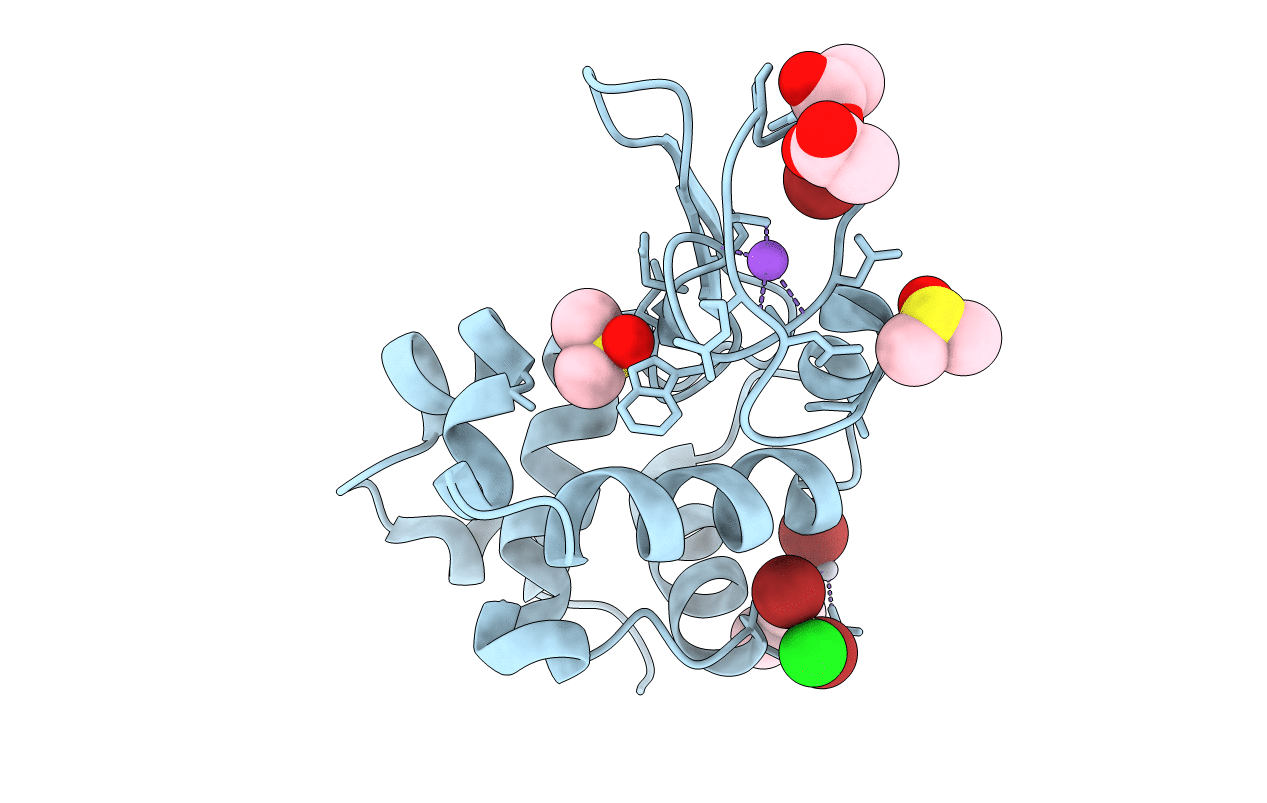
Deposition Date
2014-01-31
Release Date
2014-09-24
Last Version Date
2024-11-13
Entry Detail
PDB ID:
4OWB
Keywords:
Title:
Cisplatin binding to HEWL under sodium bromide crystallisation conditions
Biological Source:
Source Organism:
Gallus gallus (Taxon ID: 9031)
Method Details:
Experimental Method:
Resolution:
1.69 Å
R-Value Free:
0.26
R-Value Work:
0.20
R-Value Observed:
0.20
Space Group:
P 43 21 2


